Ten years ago, if a Ford Mustang with no GT badge pulled up at a red light and revved its engine at anything remotely quick, its driver would more than likely get laughed at and soon after, see nothing but tail lights. The reason stems from stang’s actually ponies as for ages, a single exhaust and no “GT” meant only six cylinders. Back then, a 3.8 liter single overhead cam engine made less than 200 horsepower and had trouble spinning the rear tires of the not-very-light cruiser. Truth be told, the V6 Mustang has always been a bit of a laugh, especially to purists. The styling was there but simply put, there has never much go to match the show. For the 2013 model year, the V6 Mustang surely looks like it can show off with the best but this time around, it can also “go” with them.
Ford’s 2013 pony car may look updated enough, but in reality, it is still very much so related to the variant born in 2005. Instead of borrowing other platforms for the Mustang’s purpose, the car created almost a decade ago gave birth to a whole new chassis. Using a simple MacPherson strut set up at the front and a solid rear axle, the current stang is still rather old in comparison to its rivals. Even still, the car knows what it’s doing and has been campaigned in all types of racing with plenty of success for years. It may appear brawny on paper but there is no denying the Mustang’s ability to dance. For the 2013 model year, Ford has gone even farther with the car. In 2010, a newer front face was seen and just two years later, another new one shows its choppers. Subtle changes were made to the car’s grille, headlamps, tail lights and interior to simply spruce things up a bit. Mechanically similar to the 2011 car, the 2013 model differs only in looks as this could be the last time Ford designers and engineers get to play the current platform. Rumors of a fast approaching, all-new chassis and body are currently on the rise.
To find out just how changed the V6 Mustang has become, we got behind the wheel of a 2013 Coupe Premium with the six speed automatic. Pricing for the car starts at $26,200 which gets buyers features such as HID projector headlamps, leather sport seats, air conditioning, Shaker supplied stereo, Sync voice command, satellite radio, electric power assisted steering and a limited slip differential. Added to our Deep Impact Blue tester were $2,885 worth of options including the transmission and V6 Pony Package. With destination charge, our Mustang rolled off the factory floor with a final MSRP of $29,880. That’s about $3 grand more than a similar rival from Hyundai we tested earlier in the year.
Since 05, the Mustang has been stylistically retro and the 2013 face lift still holds strong to that creation eight years ago. The front lights are different from before with separate projectors but their basic housing is still nostalgic. The grille may appear more rounded than 2012, but it still harks back to the good old days of the first generation Mustangs. With its long hood, sloping rear deck and angular tail section, the 13 variant could still get confused for 67 if the fog was thick enough. By no means ugly, the design seems to have started to appear dated which could be fixed by a complete redesign. Here’s a thought for Ford: the Fox bodied cars are now considered “retro”.

What’s not dated about the 2013 Mustang is what’s under the hood. Just like the 2011 and 2012 vehicles, our tester came equipped with legitimate power by way of a new base engine. Displacing 3.7 liters and using dual overhead camshafts, the Duratec V6 features variable valve timing to create 305 horsepower. Supplying a solid 280 lb-ft of torque to the rear wheels, the sixer is right on par with the 3.6 Camaro and 2.0T Genesis it competes heavily against. Connected to the new engine is an als0-new six speed automatic transmission. Replacing the tired and old five speed slushbox, the 6R features revised gearing to offer up better performance as well as higher fuel economy. For the first time, a Mustang can break the 30 mpg club as our tester featured an EPA highway rating of 31 mpg. Accompanying the efficiency is honest speed as the base stang is no longer a slouch with a 0-60 mph sprint in under six seconds. An even faster time can be had with the optional 3.31 performance final drive but at the expense of highway economy. Despite the longer gearing, our Mustang was willing to rev and smile inducing quick. And no longer does a six cylinder Mustang sound weezy as our 3.7 sang a sweet song all while supplying frisky highway on ramp excursions. With the updated six speed that’s smooth as silk, this may very well be the best base Mustang drivetrain ever.

Being inside the Mustang is a truly special treat. In comparison to its retro rivals from Dodge and Chevrolet, the Ford seems to put the idea to practice best in regards to interiors. The big, chrome filled gauges look handsome instead of last-minute. The flow of the car simply works and outward vision is never an issue: a stark contrast to the Camaro. With our Premium’s leather seats, the Mustang poves rather comfortable even for prolonged distances. Everything seems excellent until small bits and pieces are revealed. The Ford lacks a telescoping wheel while hard, rental car-grade plastics can be found scattered about. Even still, the style is just right and Ford’s Sync technology can offer up a wealth of options from phone calls to radio controls. Add in a well placed seating position that allows for comfortable driving, and the Mustang’s interior makes for a solid daily drive.
The Ford may have a much less sophisticated rear suspension compared to its rivals from Chevrolet and Dodge, but among the three “pony cars”, the Mustang manages to feel lightest on its feet. While the solid rear axle may seem far too simple, it gets the job done and feels controlled and responsive. With less weight up front than the Camaro, the stang feels as if it can enter a corner faster and deeper while the communication between driver and car is worlds ahead. Not once did we second guess where the front end was or what it was doing and despite its electric steering, that “strange” sensation didn’t show its face as often as others. It isn’t without its faults though as there is only so much engineers can do with a solid rear axle. More often than not, our Mustang would get a bit too “shaken” up over mid corner bumps, uneven asphalt and deep potholes. It may be solid, but it can’t match the magic created by the independently sprung Genesis.
For years, anyone who uttered the phrase, “I’ve got a V6 Mustang” almost instantly received the question, “why not the V8?” And for all of those years, there never really has been a legitimate excuse. The eight cylinder versions were not that much more expensive for being substantially faster and hardly any less efficient. It may have taken Ford nearly 50 years, but finally an excuse has been created. With its new-found power, legitimate performance and surprisingly good fuel economy, the V6 Mustang is no longer something to be questioned. Yes, the V8 is really quick but it comes at a heavier price gap and even heavier economy difference than before. The 3.7 simply makes sense as it is plenty powerful to satisfy most and comfortable enough to live with day in and day out. It may be fighting harder than ever before due to so many sport car newcomers, but the Mustang should never be ignored if shopping for performance and style. Finally, Ford has done something different by paying attention to its highest volume Mustang in order to stop the ridicule. No longer something to be laughed at, a driver better take notice next time a base stang rolls up at the lights as the 2013 Ford Mustang is finally impressive.

Photos: © Copyright 2011 Ossamah Shabbir

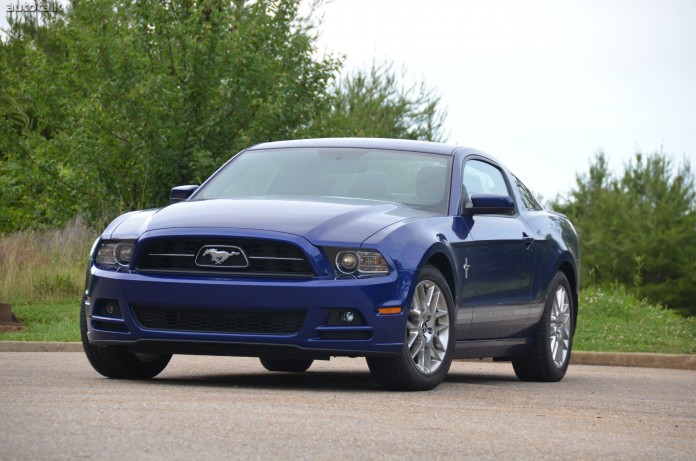


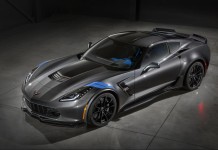

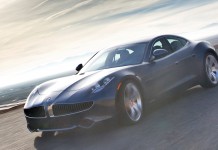
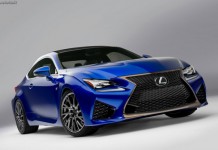
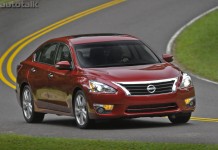



[…] 2013 Ford Mustang Review | Ford Reviews at AutoTalk Filed Under: Car Reviews, Uncategorized Tagged With: 2013-ford-mustang-review, backup, camaro, car reviews, communication, copyright, ford, king, review, river, story, system […]
[…] 2013 Ford Mustang Review Ten years ago, if a Ford Mustang with no GT badge pulled up at a red light and revved its engine at anything remotely quick, its driver would more than likely. … final MSRP of $ 29880. That's about $ 3 grand more than a similar rival from Hyundai we … Read more on AutoTalk […]